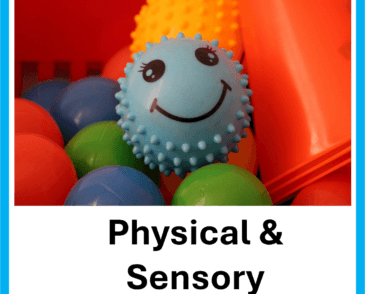

Last Updated - February 5, 2025
Supporting Early Years – Sensory processing needs
- Understand adaptations may be needed in the environment e.g. quiet safe space to reduce sensory overload.
- Support regulation when sensory response is triggered whether tactile; auditory; olfactory; visual; gustatory; vestibular or proprioceptive (linked to positioning).
- Provide sensory breaks which follow child’s preferences e.g. spending time outside or access to a sensory room with silence or no lighting or low-level lighting or gentle music to promote regulation depending on preferences.
- Provide resources and experiences offer sensory stimulation for short periods of time regularly e.g. if it’s a noise issue, adults provide reassurance and 1:1 attention during the fire alarm practice or adults modelling playing with malleable materials and allow child to place their hands on top of the adults.
- Specialist resources may be required e.g. ear defenders or gloves to promote handling of certain materials.
- Create an ILDP (Individual Learning and Development Plan –ILDPs (Individual Learning Development Plans) – Family Hub (torbayfamilyhub.org.uk)) to support child if they need support making progress across seven areas of learning and review it regularly with family and other professionals. If the child struggles with dysregulation, a regulation plan may be helpful Developing an Emotional Regulation Plan – Family Hub (torbayfamilyhub.org.uk).
- Apply for ALFI (Activity Led Funding for Inclusion) if additional support is needed Early Years additional funding for children with SEND (ALFI and DAF) – Family Hub (torbayfamilyhub.org.uk).
- Support an enhanced transition to next setting/school Enhanced transition planning (Early Years to Primary School) – Family Hub (torbayfamilyhub.org.uk).
View and/or download the Torbay Early Years Toolkit here: Torbay Early Years Graduated Approach Toolkit – Family Hub
